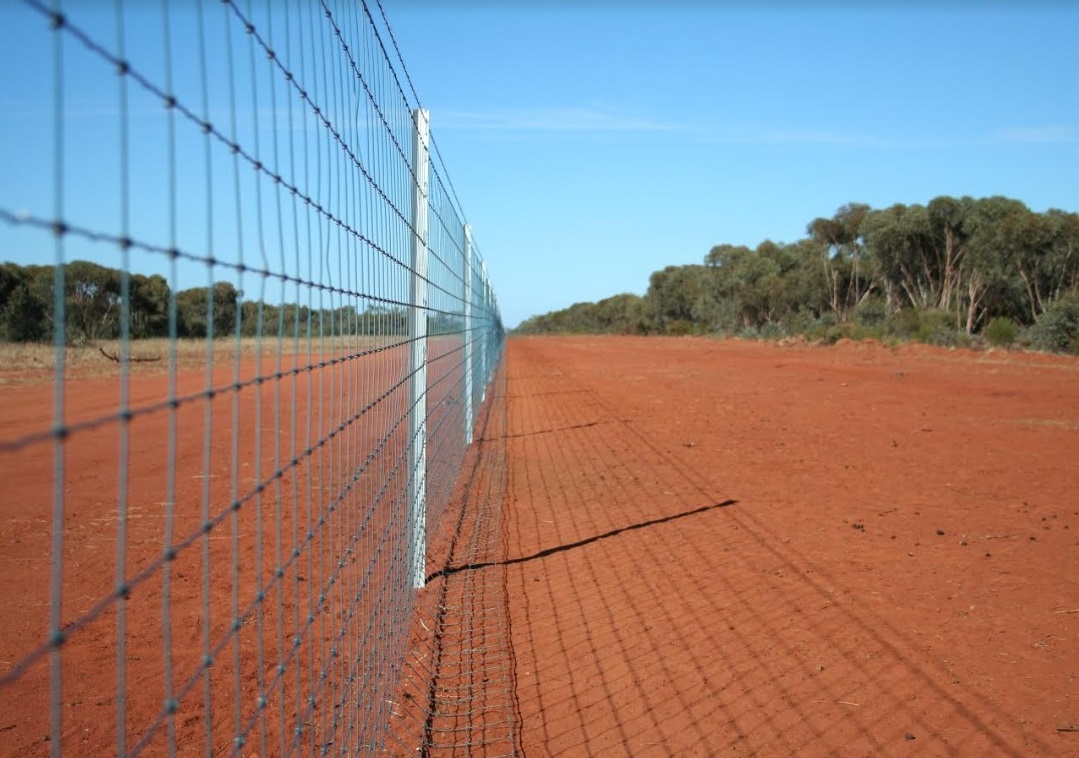
Exclusion fencing is considered a vital part of a total grazing pressure program.
FALLING sheep and lamb prices, exclusion fencing growth and an expected short season providing short-term grazing has prompted limited sheep purchases by Queensland producers.
However, the purchases have reportedly been only a fraction of those in the preceding three years and Queensland’s online sales indicate increasing numbers of sheep have continued to be sold to interstate buyers and processors.
However, Queensland graziers with inadequate feed for cattle behind exclusion fencing, but with enough grazing pressure control now to protect sufficient pasture for sheep, are taking advantage of the recent dip in restocker, Merino and store lamb and ewe prices.
The continuing dry season across New South Wales and other eastern states has driven increased numbers of lambs into abattoirs and saleyards, undercutting saleyard and over-the-hook lamb and sheep prices.
And the trend is set to continue with the New South Wales Department of Primary Industries reporting that any rainfall received in January and February had little impact on widespread drought conditions across the state due to high temperatures and evaporation.
Queensland’s Agriculture Minister Mark Furner also this week announced an additional $6 million in funding to protect the state’s flock from wild dog predation.
In late February, AuctionsPlus reported increased buying activity from central western and southern Queensland in online sales, taking advantage of slightly cooler intrastate prices, securing several large lines of Merino breeders and wethers.
Elders Longreach branch manager Tim Salter said the recent trading of sheep into Queensland was only a fraction of purchases 12 months and two years ago.
“We were buying a lot more sheep in 2016 and 2017 than in early 2018.
“We are just as dry here now as they are getting down there.”
He was aware of some recent sheep purchases – and not to exclusion-fenced properties — made to replace cattle that were sold before recent light rain.
“The numbers are nowhere those of the previous six months and the previous 12 months before that.”
“Otherwise, the exclusion fences absolutely are having a big impact on security.”
The recent Queensland sheep buying, spanning store Merino wethers, mixed sex lambs and shedding breed lambs and ewes, has coincided with a slump in restocker demand and from processors overwhelmed by direct consignments as indicated by Meat & Livestock Australia’s lamb and mutton price indicator movements.
On February 20, the MLA’s National Livestock Reporting System quoted its restocker lamb indicator as falling 7 cents to 660c/kg. The restocker indicator fell a further 14 cents to 646c/kg the following day and the trade, Merino and light lamb indicators also fell 4-7 cents. The lamb indicators continued their downward slide with the restocker indice falling 32 cents to 628c/kg, and Merino lambs dropping 18 cents, in the week up to February 28. In the week up to March 7, the market slide was more general with the restocker lamb indicator down 21 cents for the week to 613 cents, Merinos lamb down 24 cents to 599 cents, light lambs down 22 cents to 628 cents, trade lambs dropping 17 cents to 639 and heavies down 20 to 631 cents. The mutton fell 7 cents yesterday to settle on 385 cents, down 28 cents for the week.
We’ve got a sheep season, not a cattle season
SimStock Rural Agencies’ Richard Simpson at Longreach said the “light” season – no grass, all herbage — had driven his recent Merino wether and ewe lamb purchases for north-west slopes clients.
“We haven’t got a cattle season, we’ve got a sheep season and because the exclusion fences have gone up it gives the opportunity to do both.
“We’re price-sensitive and if it rained we would keep the ewe portion,” he said.
“We are buying young sheep.”
Full-time rural store truck driver at Dalby in southern Queensland, Raymond Weier, said he had been able to enter the store lamb market after the recent price drops.
“There are so few store lambs up here and certainly of the right quality, you really have to get them from down south or a long way away.
“I haven’t been able to afford it, because if there is a half decent season everywhere else they just sort of bash you out of the market.”
He has bought small lines of mixed sex Dorpers and Australian Whites – anything that doesn’t need shearing – for backgrounding and the lot-feeding for sale direct to the Tamworth abattoir. He is able to protect his lambs with Alpacas, but has an $11 freight bill to get his lambs delivered and another $10 to get them to the abattoir. He has also been able to take advantage of the opportunities to buy smaller lines.
AgForce applauds latest $6 million exclusion fencing funding
AgForce has applauded the State Government’s latest commitment of $6 million toward further exclusion fencing to protect Queensland’s sheep flock from wild dog predation.
Agriculture Minister Mark Furner advised guests at AgForce’s industry function on Tuesday evening that he had signed-off on the latest round of exclusion fencing projects.
AgForce’s sheep and wool president Alan Rae said exclusion fencing was critical to the resurgence of Queensland’s sheep and wool industry, creating employment opportunities and improving local economies.
“Exclusion fencing is a wise and effective investment in the future of Queensland’s animal agriculture and the many rural communities who rely on it.
“Each year millions of dollars’ worth of livestock are killed or maimed by wild dogs,” Mr Rae said.
“Western Queensland has seen a 75 percent drop in sheep numbers.*
“The economic, employment and social impacts of these stock losses extend well beyond the farm gate, stifling our outback towns and communities,” he said.
Exclusion fencing projects have resulted in lambing rates rising from 20pc to 80pc-plus, with analysis demonstrating a $3.28 return to the economies of local towns for every dollar spent by government on fencing,” Mr Rae said.



HAVE YOUR SAY